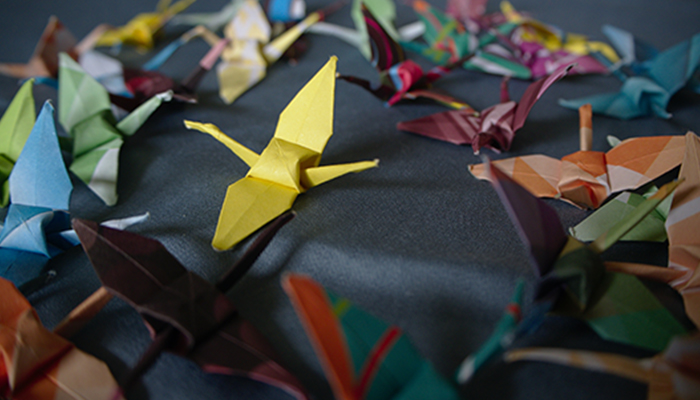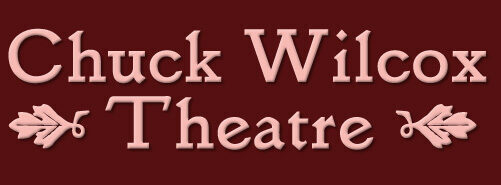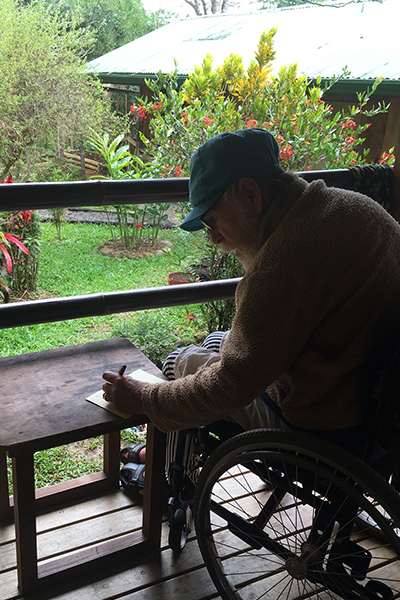I became interested in Haiku after my stroke in 1983. While in recovery I wasn’t able to keep long poems or speeches in mind. I realized that Haiku was a perfect form for retraining my memory, but could barely write without my dominant right hand. My wife bought me the high end computer of that time. I figured out how to write haiku on the computer, accumulating them, and creating several 1/8 page sized books for family and friends.
There is a notion in my martial art (Kendo) that folding 1000 cranes is healing, so I folded 1000 cranes with my left hand. I also decided to write 1000 haiku, which meant I had to write one every day. I composed a haiku each day, often while waiting at a bus stop on my way to therapy or back.

I developed a strong interest in reading and writing Haiku. I did some publishing in Haiku journals. I realized that Haiku is not a syllable count – 3/7/5… it needs to reflect the language in which it is written. So I retain the three line form, but don’t rhyme, or worry about length. My intent is to make the poem a sword cut, usually at the end, where a sudden twist makes the poem leap to at least one new understanding. I began to call these poems Sword-Cut Haiku.


